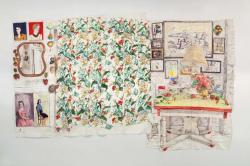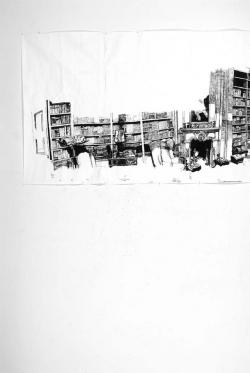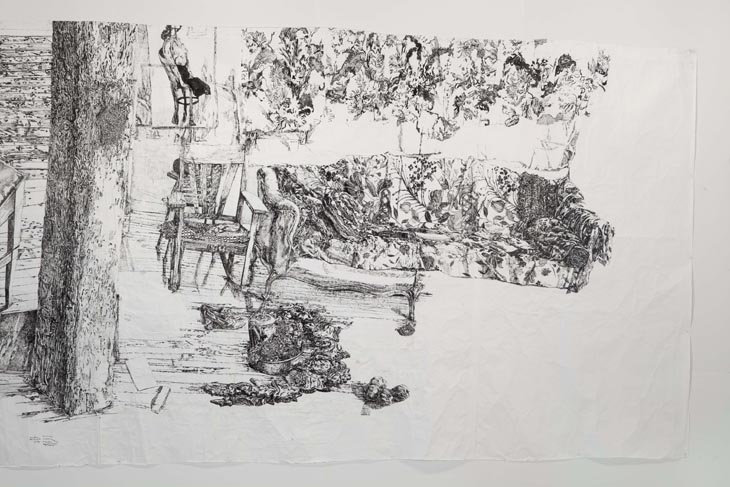
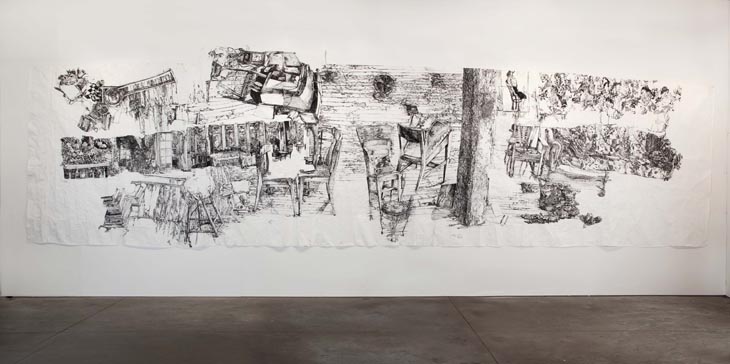
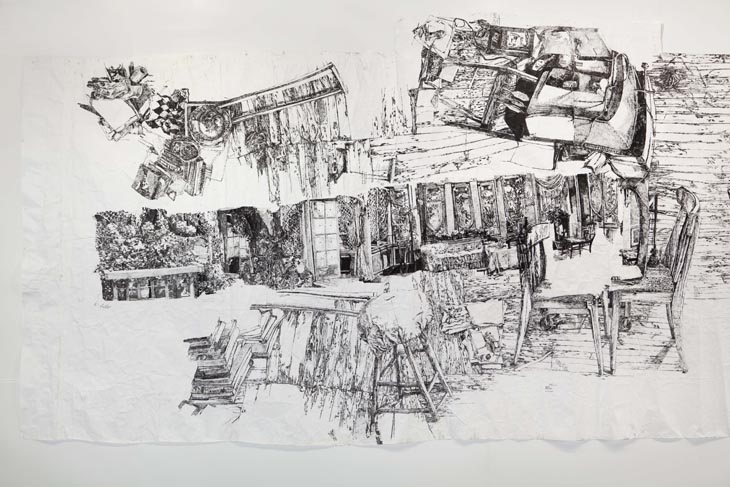
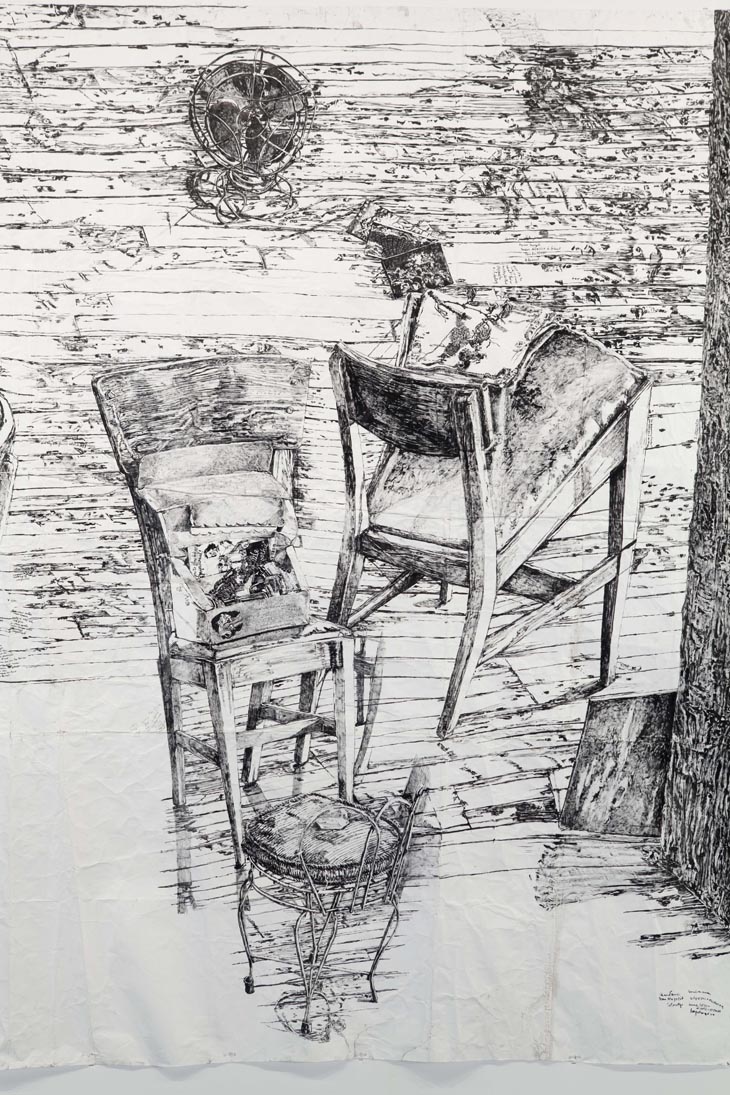
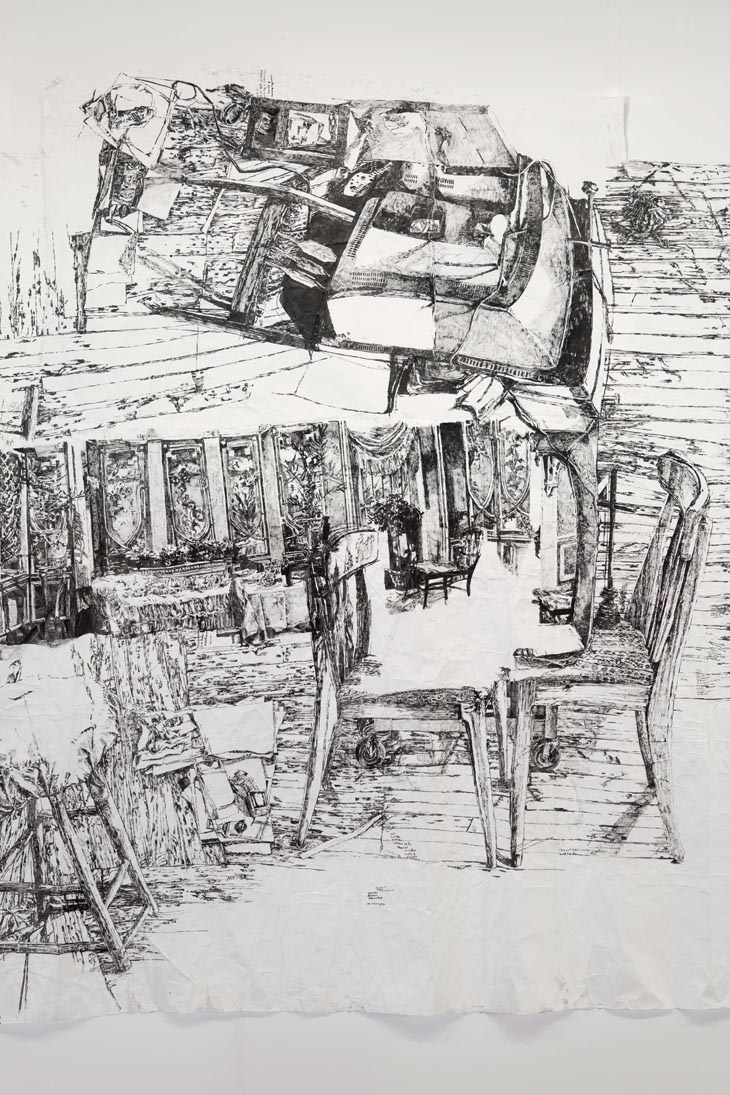
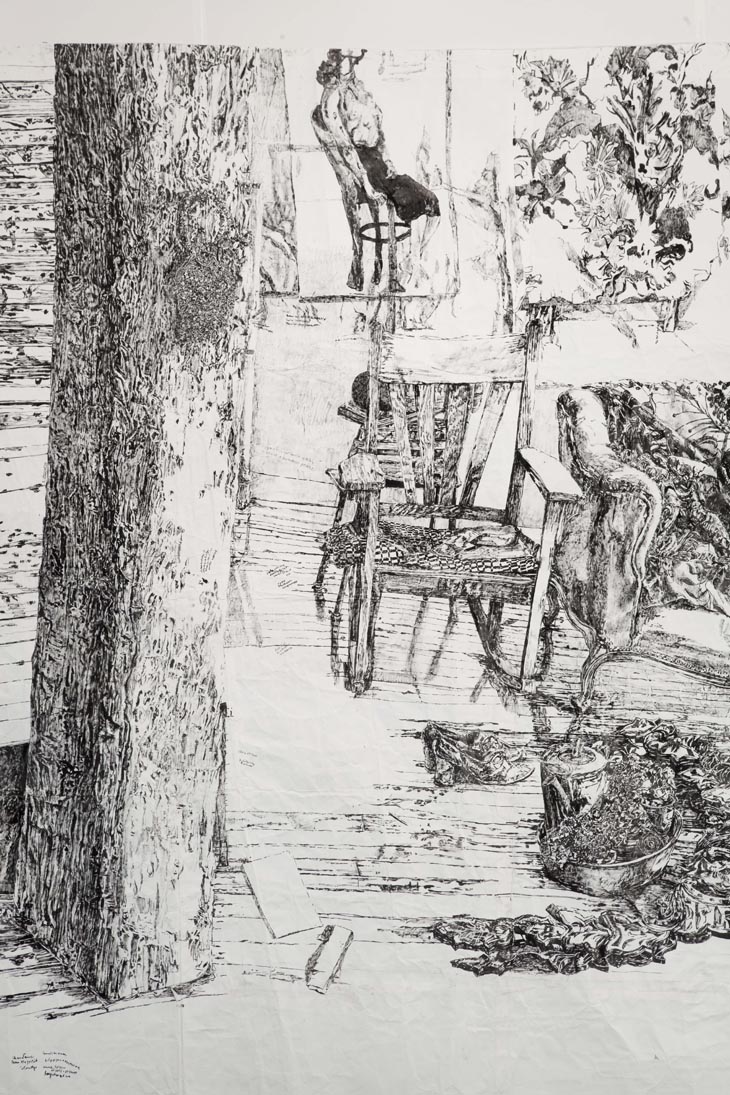


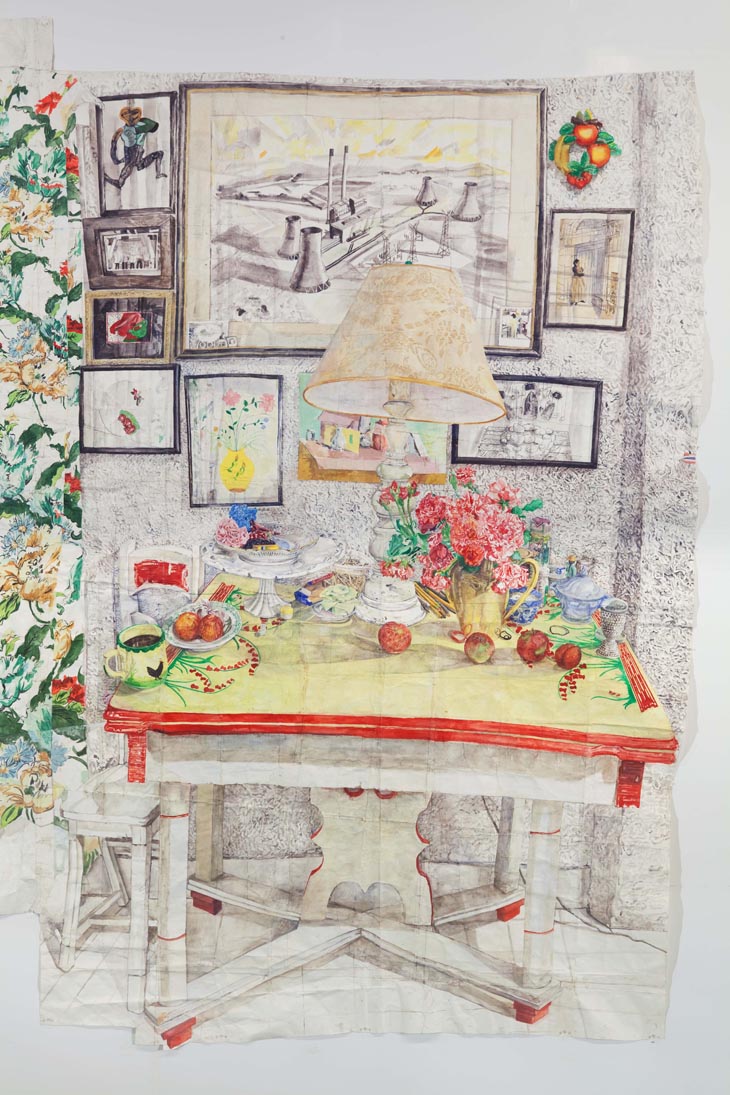


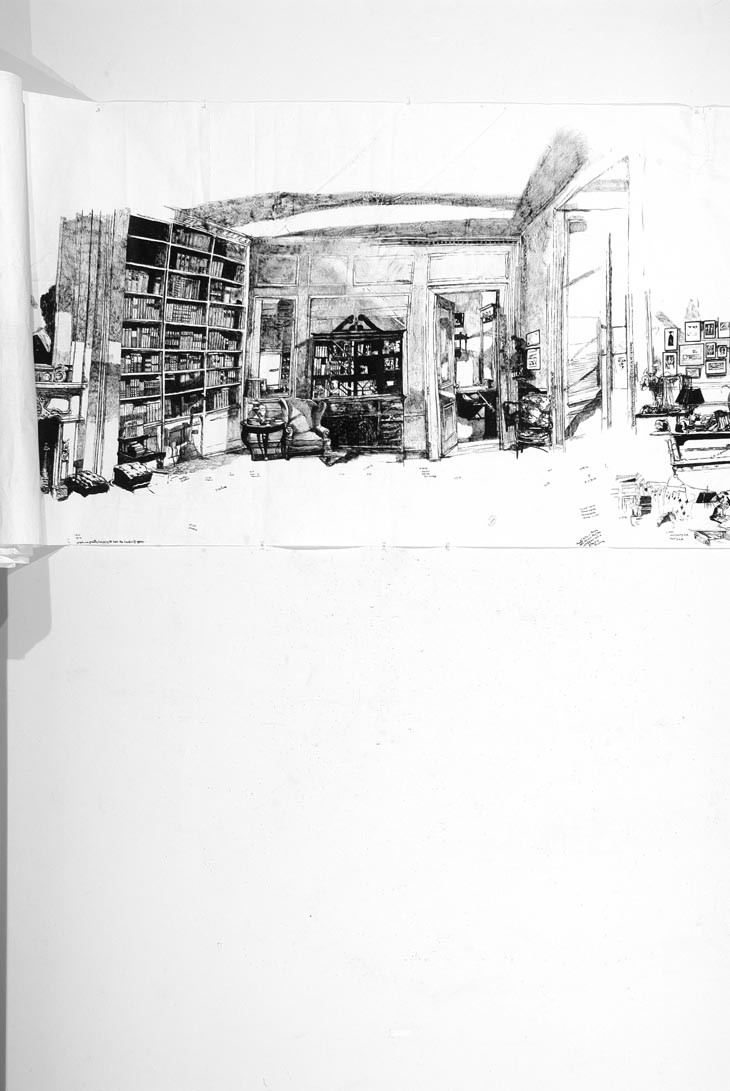

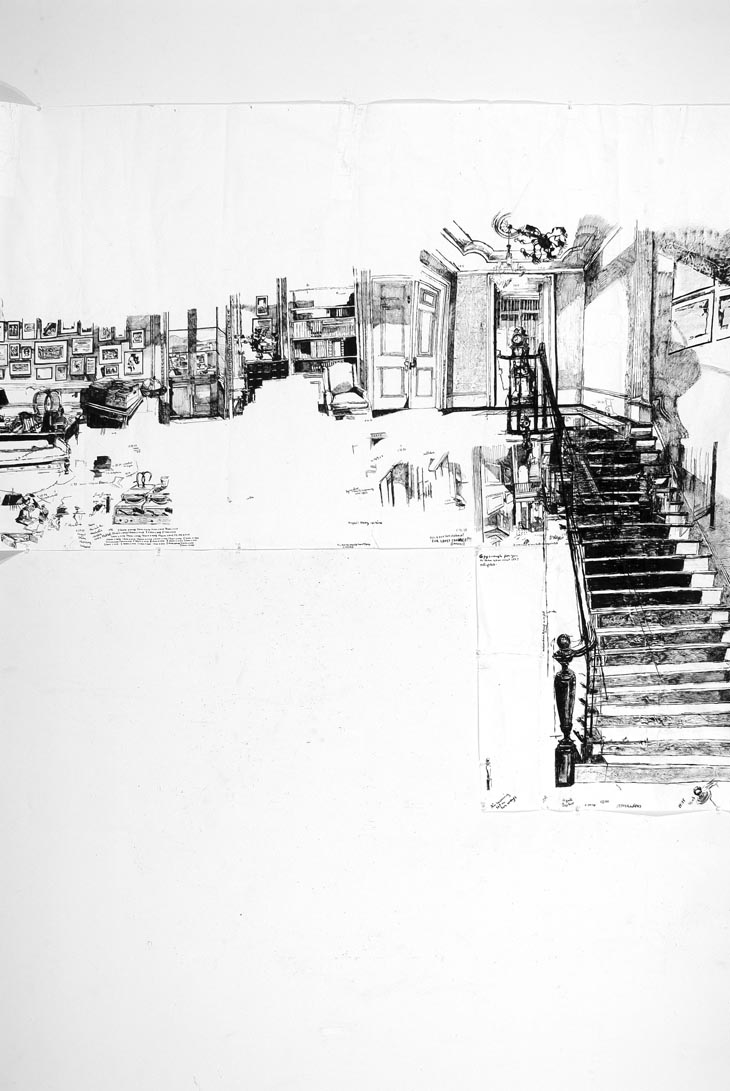
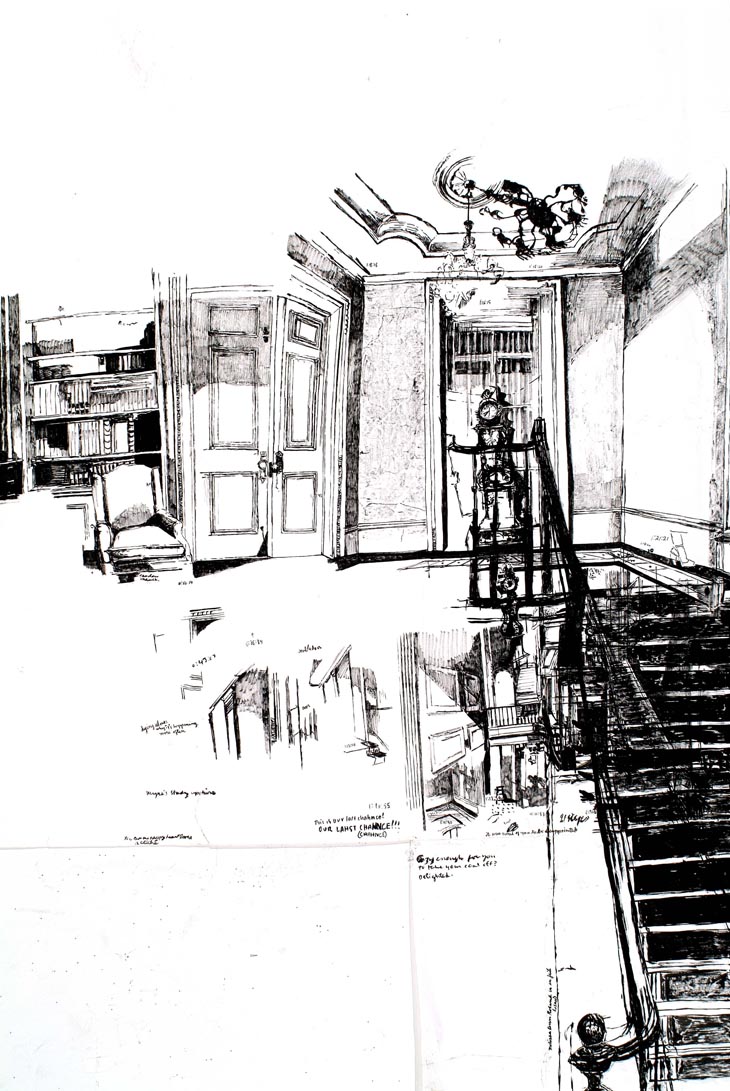
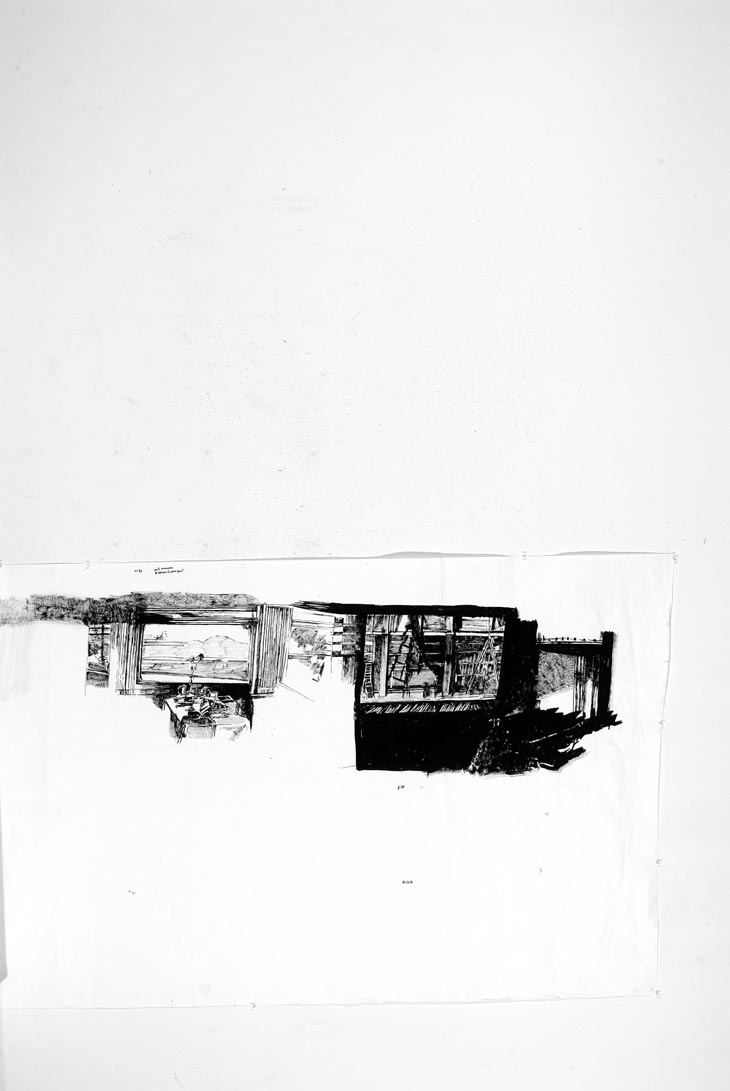
Dawn Clements
Dawn Clements’ works use drawing as a way to document and describe durational experiences: watching a film, for instance. Employing a painstaking precision of description and often writing notes directly onto the paper, Clements uses the act of drawing as a parallel to remembering: these are aides-memoires, attempts to hold transient things in the mind. Like the tracking shots of cinema, they sweep through interiors, gathering visual information, but by eliding the human presence, abstract place and setting from their narrative contexts.
The act of the film’s being remembered – the emotional and intellectual associations within the artist’s mind – is Clements’ real subject. Travels with Myra Hudson, for example, takes Joan Crawford’s 1952 film Sudden Fear as its subject, in which Crawford plays the character of the drawing’s title. Travelling from left to right, Clements’ drawing parallels both the literal journey that drives the film forward – from Hudson’s book-lined study, down a sudden staircase, into the compartment of a zooming train – and the movement of Clements’ own recollections of the film, where certain details gain stronger purchase in the memory than others.
Similarly, the gouache on paper work Untitled (Colour Kitchen) began as a way to sustain the memory of something transient: in this case, a gift of roses from a friend. In drawing the roses, Clements found her work expanding through the desire to capture the roses’ immediate surroundings: a table, a lamp, the wall and the pictures on it, a patterned curtain. The work’s voraciousness – its apparently inexhaustible hunger to immortalise visual pleasure against the omissions and slippages of human memory – makes it a testament, of sorts, to the joys of looking. In Clements’ work, everything connects: the drawn line is like a thread that binds the present to the past.
Text by Ben Street






